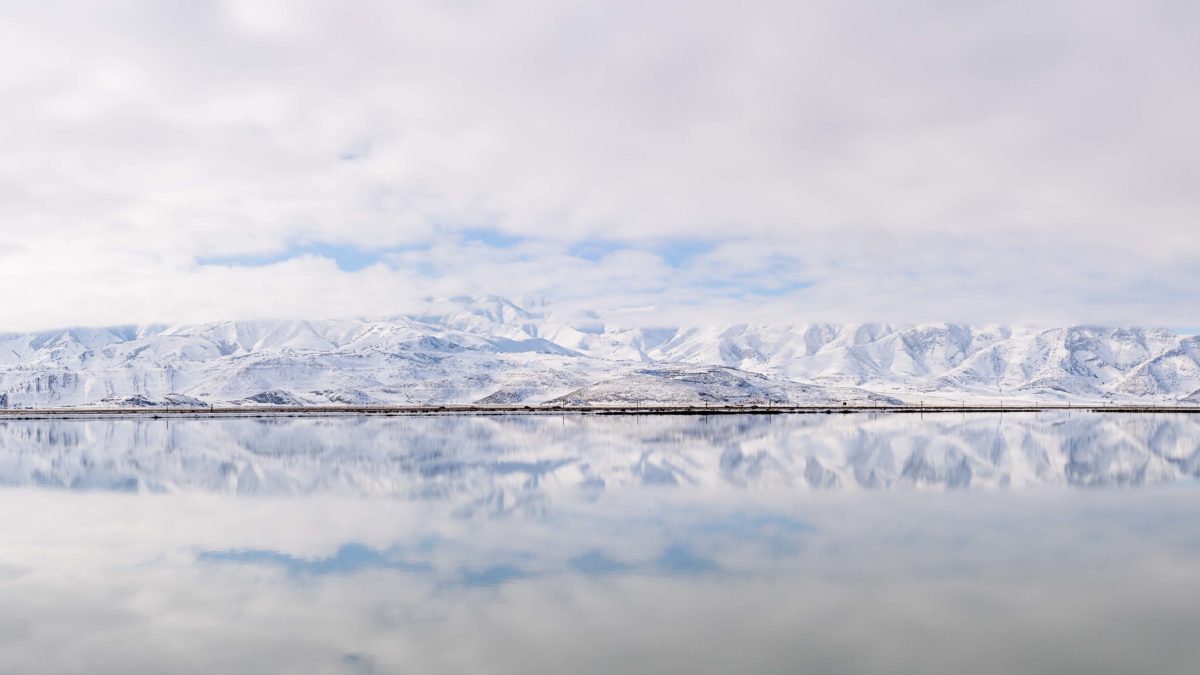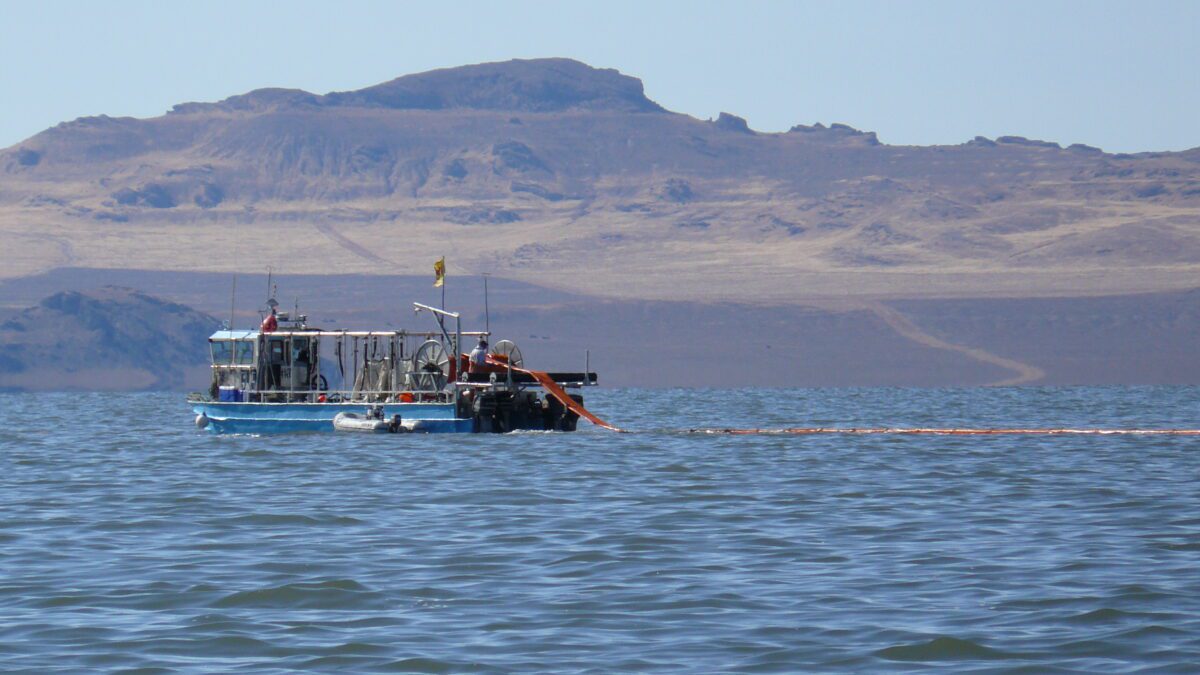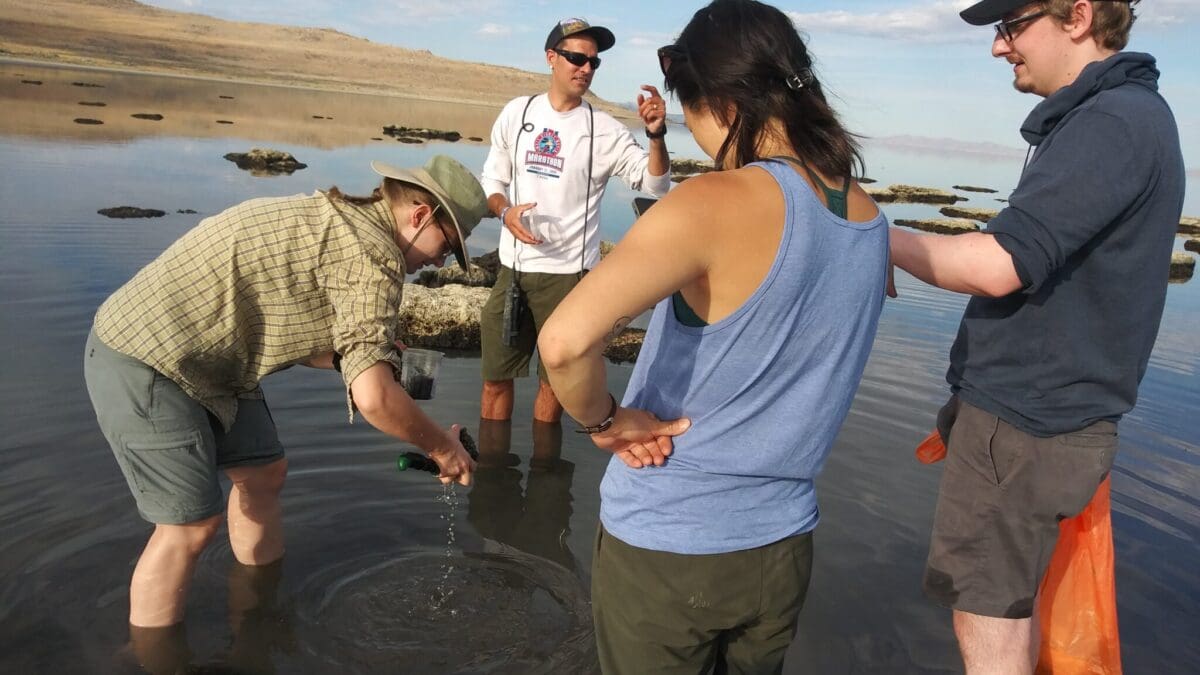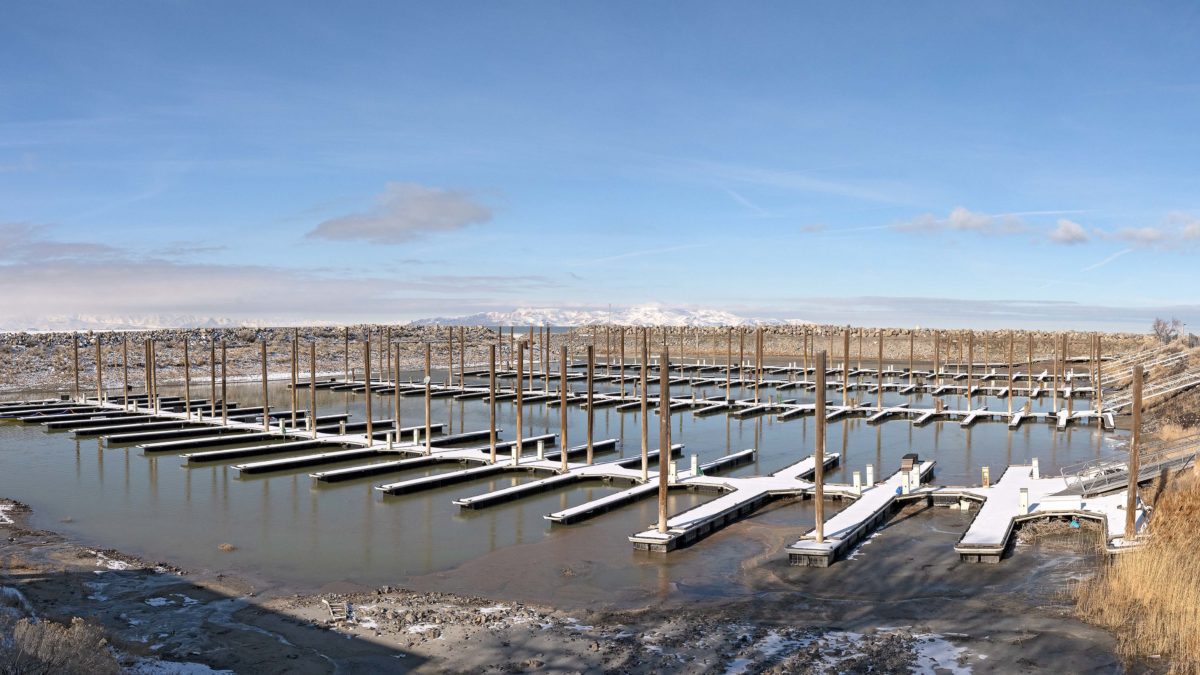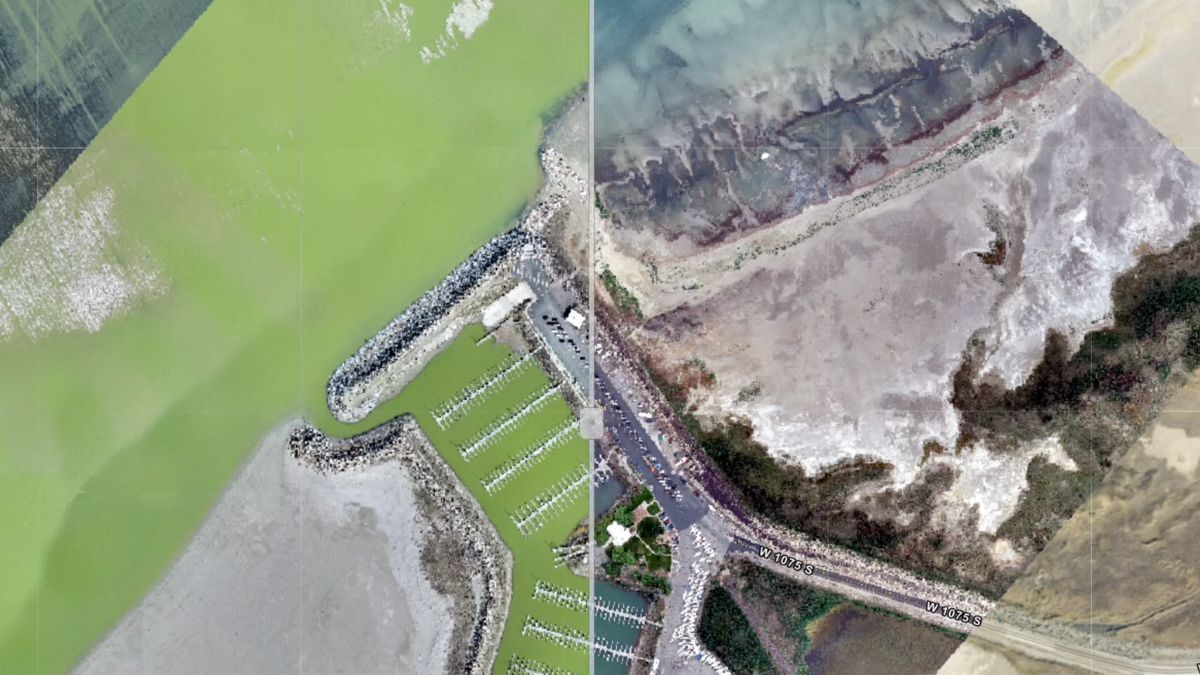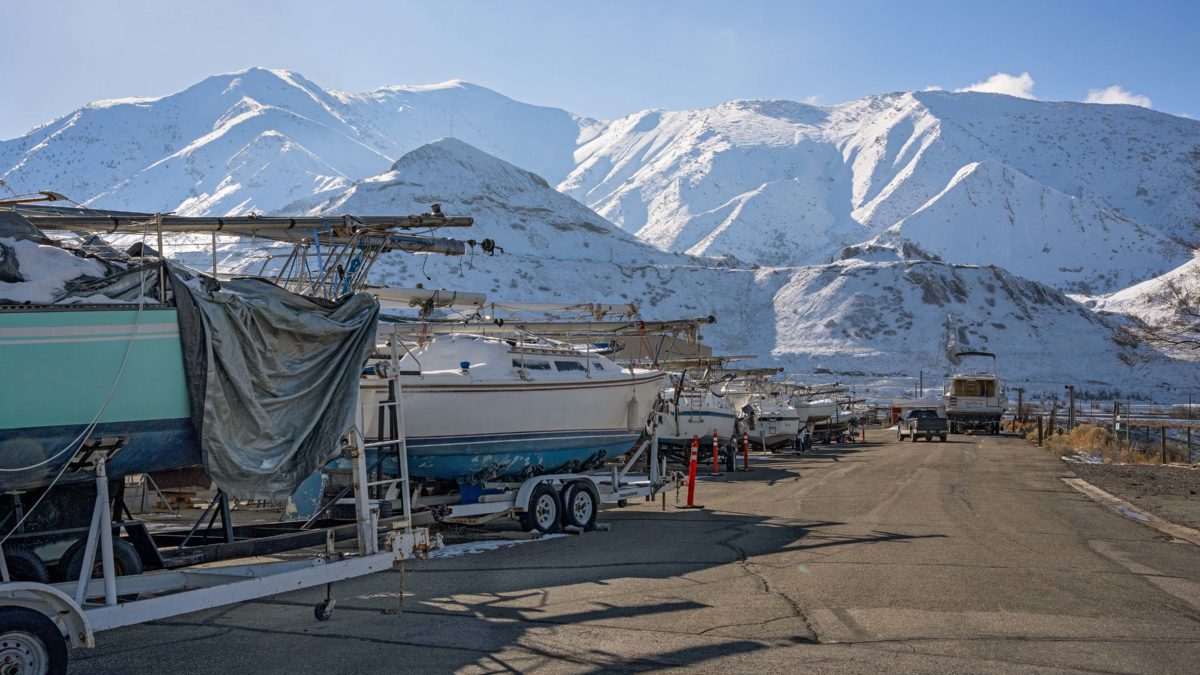Top Stories
University of Utah scientist comments on the shrinking of the Great Salt Lake
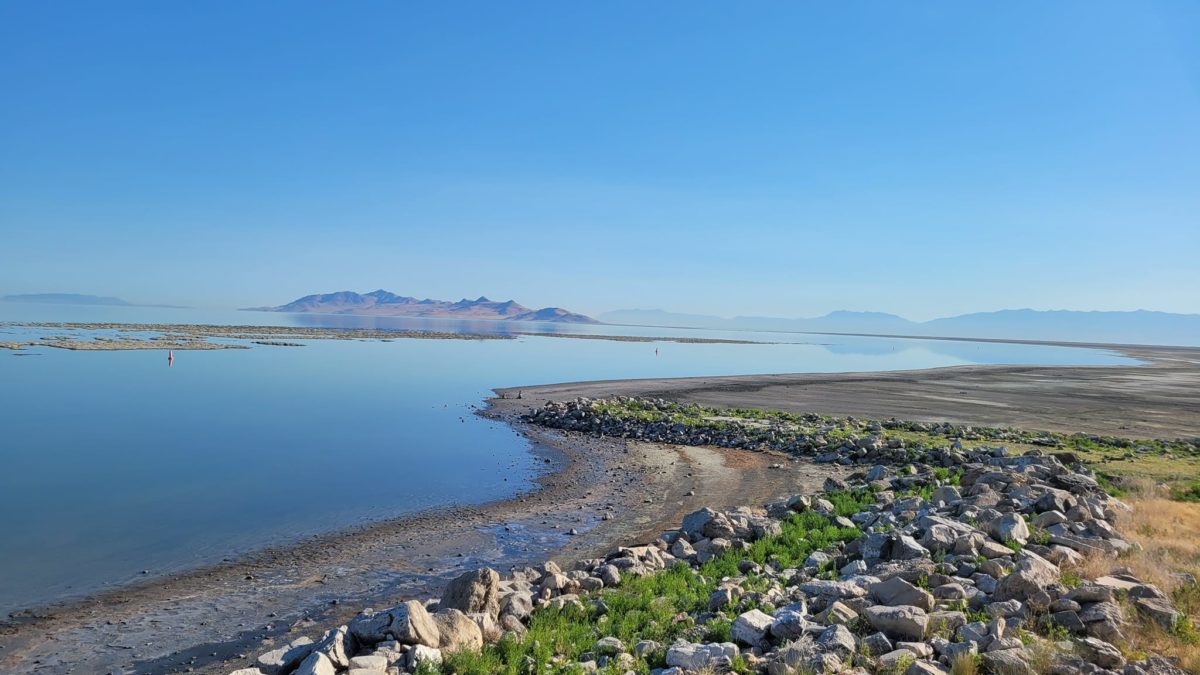
The Great Salt Lake on June 27, 2022. Photo: Great Salt Lake State Park & Marina TownLift
SALT LAKE CITY, Utah — TownLift recently reported on the economic implications of the shrinking of the Great Salt Lake, but we wanted to talk directly to some of Utah’s local experts on the issue. The following is an extensive interview with Dr. Kevin Perry, an atmospheric scientist at the University of Utah who studies some of the implications of the shrinking Great Salt Lake.
Dr. Perry was interviewed by the New York Times on the same subject recently, but takes issue with some of the ways that the article characterized his findings about the lake. The following interview is presented in Dr. Perry’s own words, allowing our readership to draw their own conclusions about his findings.
You can listen to the full interview here or read the transcript below.
Trevor Smith: I’d like to introduce myself. I’m Trevor Smith, a community reporter and editor with townlift.com. And I’m here with a very special guest. Would you mind introducing yourself?
Dr. Perry: Sure. My name is Dr. Kevin Perry, and I’m an atmospheric scientist at the University of Utah, and I’m an expert on air quality and specifically have been looking at dust coming off of the Great Salt Lake for the last few years.
Trevor Smith: Admittedly, we really wanted to talk to you after we saw the article in The New York Times that was titled, “As the Great Salt Lake dries up, Utah faces an environmental nuclear bomb.” We saw you as the featured resident expert on the issue and saw that you’re from the U, and got excited to talk to you. So how did you get involved in researching this topic? Or how did you start?
Dr. Perry: So it actually starts a long time ago, back in the mid-1990s, I was actually an air quality scientist for the national park system, the national parks of the United States, and we were looking at dust transport in those parks. And it was really weird, but there was a lot of dust in the eastern part of the United States during the summer that was very different than any other North American dust. We started tracking it back, and it was actually African dust that was being transported across the Atlantic and into the Eastern US. And then a few years later, we started noticing dust storms coming in from the west, and they were coming from China from the Gobi Desert, and it was having significant impacts locally. And, you know:
I moved to Salt Lake City about 21 years ago. At that time, the lake was much higher, and there weren’t any significant dust storms. But over that time period, the lake has shrunk significantly, and about 10 years ago, I started noticing dust plumes coming off the Great Salt Lake and thought, you know, this is an area where I have expertise and I can probably do something useful that would help the community. And so I started focusing on these local and regional dust events at that time.
Trevor Smith: Right. So to clarify, and forgive me for using reporter terms, were you the one to kind of break the story as far as this toxic dust below the Great Salt Lake?
Dr. Perry: Yeah, so I hate that moniker that The New York Times put on it; they were going for clickbait. It was a little dramatic. I mean, honestly, I’ve done literally 100s of interviews over the last three years about this topic, and they were the most sensationalized. And they got something seriously wrong in that they said that the arsenic was coming from industrial sources and from mining. It’s actually naturally occurring, which I think is a pretty big oversight on their part. But yeah, I was the person who went out and identified the fact that there is arsenic, high concentrations of arsenic in the soil out there. It was part of a two-year study where I was funded by the state of Utah to determine if there were any harmful heavy metals in the soil. So I spent two years out on the lake collecting soil samples. I sampled, you know, every 500 meters over the entire 800 square miles of the lake bed. It took more than 150 trips out to the lake bed. But we now have a comprehensive survey of what’s in the soil that’s being exposed as the Great Salt Lake recedes.
Trevor Smith: In layman’s terms, what makes that soil unique or uniquely problematic?
Dr. Perry: So dust coming off of any source, regardless of what that dust is made out of, is harmful if the concentrations are high enough. So you know, you breathe in a dust cloud or chalk in the classroom, you start to cough because it has an immediate impact, and the dust can do the exact same thing. And that’s not what I’ve been studying, but that’s what others are starting to study now: what are those concentrations coming off the lake? And how often do they occur? We don’t know the answer to that yet.. But I was funded to determine if there are other things in the soil that might make it uniquely hazardous. I was looking at 53 different elements to try and just see what was there, and as it turns out, there are, in fact, high concentrations of arsenic relative to what the EPA would consider safe in the soil. And arsenic wasn’t the only element of potential concern. There were nine elements that were at least in parts of the lake higher than what would be recommended by the EPA.
Every single measurement that I took up, arsenic was above those regional screening levels established by the EPA, and that doesn’t mean that it’s necessarily harmful, because the harm depends upon the dose that people receive. We don’t know the concentrations in the air, we don’t know how frequently people are exposed, and we don’t know what fraction of that is actually absorbed into the body. So that’s what we’re working on. Hopefully, in the next two years, we’ll have a better idea of whether or not the arsenic in the soil poses an actual threat to the adjacent population.
Trevor Smith: Okay, so that the extent of the present threat is still under review, then.
Dr. Perry: Yeah, and the other thing about the arsenic is, if you have a big dust form, the arsenic doesn’t pose an immediate threat. It’s the type of toxin that requires years of exposure in order to manifest health concerns. So I talked about this as a contaminant of potential concern that could lead to long-term health problems in the adjacent population if we’re exposed to it at high enough concentrations frequently, frequently enough. And, you know, exposure to arsenic over the long term can lead to increases in skin cancer, lung cancer, bladder cancer, diabetes, and cardiovascular disease.
Trevor Smith: So to summarize the problem from the beginning, we’re concerned about the lake decreasing in level and then exposing this dust to wind and storms so that it could potentially migrate into our breathable air. Is that kind of a good summary of the threat?
Dr. Perry: Yeah, exactly what’s going on this wasn’t an issue 10 years ago because the lake was high enough to cover up most of the dust hotspots that I’ve identified as locations where the dust is actually coming from. But now, most of those dust hot spots are, you know, high and dry, so to speak, and lead to dust when the conditions are right.
Trevor Smith: Right, and some of these questions might seem simple, but I’d like to hear it in your words. What is causing this? You mentioned this arsenic is naturally occurring in the soil, right? That’s not a human-created problem, then, according to what you found?
Dr. Perry: Well, let’s put it this way, every single measurement that I took of arsenic was high, even in the areas that are 75 miles away from Salt Lake City. And if you had an industrial point source that was polluting the lake, you would expect those concentrations to be highest near that source and then get lower as you move away from that source. But the arsenic concentrations were fairly uniform over the entire lake bed, and the only explanation for that uniformity is that it was slowly deposited over time and not coming from an individual or two or three different sources.
Trevor Smith: Right. And that makes a lot of sense. So regarding the decreased water levels, how do we explain the continuous decrease in the Great Salt Lake’s levels?
Dr. Perry: Yeah, so a lot of people think that “Oh, this must be due to climate change,” or “this must be due to the ongoing mega-drought that we have.”
Unfortunately, we got ourselves into this mess by using an unsustainably large amount of the water before it gets to the lake. And we’ve been doing that for decades. What’s been happening is the lake has been decreasing about a half a foot per decade, you know, over the last 100 years due to these water diversions, and we’ve diverted so much water that if we have 100% normal snowpack, the lake will still shrink, because not enough water is making it to the lake. Right now, because we divert so much water, we would have to have 130% normal snowpack, and that’s just not sustainable.
Obviously, you know, you would expect the long-term average to be about 100% normal snowpack, but we’re in a drought right now, so we’re getting less than 100%. If we need 130% just to break even there’s no way that the lake is not going to shrink. There was a study by Utah State that said that the lake is down about 17 feet from where it was, and 11 feet of that 17 is due to our unsustainable water diversions, and six feet is due to the ongoing mega drought. So ironically, if the lake were 11 feet higher than it is right now, and we were in this mega-drought, the mega drought would have caused the lake to drop six feet, and the dust hotspots that have been identified would still be underwater if we hadn’t diverted this excessive amount of water. We wouldn’t be talking about a dust problem yet for another decade or two, even if we stayed in the mega drought.
Trevor Smith: I heard you mention the timeline a little bit; what kind of timeline are you expecting this to cause problems, and if we continue the amount of water use that we have right now?
Dr. Perry: There are many different types of harms that come with a shrinking Great Salt Lake. The first harm was actually associated with recreation: the lake shrank, and the marinas were no longer able to support boats. Now there are no sailboats on the Great Salt Lake because they can’t get the boats in and out of the water. The dust followed pretty quickly after that.
We’re getting really close now to a tipping point called the salinity tipping point, where the salt content of the southern part of the lake is so great that the brine flies and the brine shrimp have trouble reproducing, and they’re the base of the food chain. When the base of the food chain collapses, the entire ecosystem collapses and the millions of birds that depend upon this will come here and expect to be able to eat but will instead starve to death. So there are lots of different tipping points.
The dust tipping point is the one where we’ve already reached as well, but we haven’t gotten into the most significant dust problems that we might expect. The reason for that is that as the water recedes, it leaves a physical crust on the surface, and that crust can be either biological crust or it can be a physical crust. As long as that crust is present, it pretty much protects the soil from the wind. What we’ve discovered over the last two years is that the longer that the surface is exposed to the air, the more likely it is to start to erode, and once that crust starts to break down, then it increases the surface area that will actually lead to these dusty events. Right now, only about 9% of the lake bed is acting as a dust source, but my fear is that if the water remains low for another decade, that 9% is going to turn into 24 or 25% of the lake bed acting as a dust source, and the dust storms will become more frequent and more severe.
Trevor Smith: Right. The New York Times article mentioned this a little bit, but I’d like to hear it in your own words regarding the scale of these harmful impacts; are we talking about an impact on all of Utah or just the direct vicinity of the Great Salt Lake? What’s the scale of these problems?
Dr. Perry: So, to put this into perspective, the particles that come off the lake are a wide variety of sizes. If you go to the beach and you pick up beach sand, and you throw it into the air, it falls right down. The bigger particles don’t stay in the atmosphere very long, but there are certain parts of the lake where there are small particles where if you went and grabbed some of that soil and threw it up into the air, the sand would fall out but the smaller particles would persist. And it’s those smaller particles that create these dust storms. In these smaller particles that are being transported, there’s still a size range of particles.
The larger particles will stay in the atmosphere for a few hours and will affect everybody along the Wasatch Front and even up to Park City. The smaller particles will stay in the atmosphere for up to two weeks, and in two weeks, those particles from the Great Salt Lake can be transported all the way to Europe. So we see dust being transported, you know, from Africa to the US, from Asia to the United States, and we export dust from the United States to other areas as well.
But what I’ve identified is these dust hotspots are all around the lake, some in Farmington Bay, some in Bear River Bay, Gunnison Bay, and Gilbert Bay. So depending upon the wind direction, they can push that dust into all of the surrounding communities in northern Utah, all the way to Tooele, Salt Lake, to Provo, to Ogden, Bountiful. And so, you know, it’s the two and a half million residents along the Wasatch Front that will suffer the most significant impacts, but we fully expect that dust will be transported hundreds or even thousands of miles to other locations as well.
Trevor Smith: Wow. That’s amazing in a scary kind of way, but amazing nevertheless. So I’m sure you think about this, but what can be done about this problem regarding maybe at a legislative level, and individual level, etc.
Dr. Perry: So if you’d asked me three years ago, I would have been really pessimistic about the future of the Great Salt Lake. I saw what was happening, but I didn’t feel like the general public was aware and recognizing the potential problems associated with that. And frankly, I felt like nobody really cared about the Great Salt Lake. When I would ask people about it, they would say, “Oh, that’s a dirty, smelly, stinky, buggy place. Why would anybody want to go out there? Why do we care?” But in the last three years, as these dust storms have started coming off the lake bed, people have taken notice, and you can physically see these dust plumes. It deposits on your cars, it deposits on your deck, on your garden. People are wondering, “what the heck am I breathing?” So they started calling up their legislators, and the legislators have listened; the Governor, the Speaker of the House, and the President of the Senate have all publicly stated that saving the Great Salt Lake is one of their highest priorities. And they didn’t just give it lip service; the amount of legislation that they passed last year would be nothing short of sweeping. It was the most extensive water law change that have happened, I think, in the history of the state. Unfortunately, it was just a start, and the changes that they made were trying to remove barriers that were preventing water from getting into the lake, and they took the most important barriers away, but there’s still lots and lots of work to be done. The Great Salt Lake Advisory Council put together a 12-step program for saving the Great Salt Lake, and the legislature has now done the first three of that 12-step program. So we’re starting to move in the right direction, but it’s really difficult to make substantive changes to the lake to stop the shrinkage in the middle of a megadrought. If we were having average precipitation, we could make smaller changes and have an impact to stop the shrinkage of the lake. But trying to do this in the middle of a mega-drought means that we have to make drastic changes to our water use in order to have the ability just to stop the shrinking of the Great Salt Lake, and we’re not even talking about reversing the trend yet. Just stopping it should be our focus right now.
Trevor Smith: Yeah, and how much does individual action, you know, not watering your lawn, taking shorter showers do? How much does that play into it, if at all?
Dr. Perry: So when it comes to air quality, we get the same question: “does it really matter if I carpool? Does it really matter if I drive less?” From a certain perspective, that one incremental change doesn’t really move the meter. But if you get half a million people doing the same thing, then we can significantly reduce our air pollution. The same concept is true with our water usage as well. Now, one thing that we’ve learned is that the water usage that we have in Utah; 80% of the water that we divert is used for agriculture, and 20% is used by cities and industry. So when people are changing their behavior on how they water their lawns and the landscaping choices that we make we’re looking at changes in that smaller 20%. So you cannot solve this problem by eliminating grass and reducing our landscaping, but it’s certainly contributing to our problem. We need to think about how we can deliver water more efficiently for agriculture so that we can reduce their water footprint. But, you know, similar to air quality, there isn’t a single thing that we could do to improve our air quality. There’s not a single thing we can do to reduce our water usage in the state. We need to be part of the solution rather than part of the problem.
It’s really frustrating to me that we live in the second driest state in the United States and we use more water per person than any other major metropolitan area in the western United States. Why do we do that? Well, we do it because water is cheap, and we have a culture of green lawns and growing alfalfa in the state. Those are things that we need to change. I hate to say this, but we need to become more like California and be very careful with our water usage; more like Phoenix. We need to emulate our peer cities in the western US where water is valued much more than it is here in Utah.
Trevor Smith: That’s good to hear. Well, thank you so much, Dr. Perry. I think this has been really informative, and I’m sure our readership will appreciate getting, you know, an exclusive interview with you and your expertise on this issue. So thanks again for thanks again for talking.
Dr. Perry: Thanks for having me! Spreading the word and educating the public is absolutely crucial. because if people don’t understand the problem, then there’s nothing that will encourage them to change their behavior. So public education is key.
Trevor Smith: Perfect. Thanks a ton.











